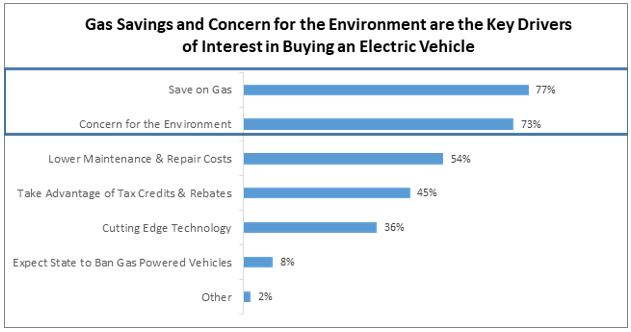BOISE – According to a new AAA survey, 25% of Americans say that they’re likely to buy an electric vehicle (EV) for their next auto purchase, with 77% of that group saying that the high cost of fuel would be a major motivator for doing so.

While some Americans are very receptive to the idea of owning an electric vehicle, more than half are hesitant to buy one, with that group citing the higher purchase price of an EV (60%) and concerns about a lack of charging stations (60%) or running out of charge while driving (58%).
“In reality, most daily commutes are typically less than 40 miles – well within the capacity of an electric vehicle that will generally have a range of anywhere from 100 to 350 miles,” says AAA Idaho public affairs director Matthew Conde. “EVs can help cut back on everyday expenses, and with proper planning, they can also be a viable option for longer road trips.”
A previous AAA survey found that EV owners do 75% of their charging at home. Level 1 AC chargers, which plug into a standard household electrical outlet, provide between 2 and 5 miles of range per hour. For faster results, some EVs come equipped with a portable 240-volt Level 2 charger that requires an electrical outlet like that of a clothes dryer – these add between 9 and 15 miles of range per hour. Finally, fixed-site 240-volt chargers can provide anywhere from 10 to 35 miles of range per hour.
“For the most part, drivers are adding EVs to their fleets rather than eliminating gas-powered cars altogether. In our new research, 78% of EV owners have one or more gas-powered or non-plug-in hybrid vehicles in their household,” Conde said. “But as drivers get more comfortable with EV performance capabilities, they’ll find ways to use them more frequently.”
There are significant generational differences in EV interest, with 51% percent of Gen Z and 30% of Millennials saying that they are likely to buy a fully electric vehicle for their next purchase, compared with 22% of Gen X, 16% of Boomers, and 12% of Pre-Boomers.
AAA reminds EV drivers to include the use of heating and cooling systems when estimating their vehicle range. In previous AAA testing, using the air conditioner in 95-degree weather reduced an electric vehicle’s driving range by as much as 17 percent. Using the heat in 20-degree weather dropped an EV’s range by an average of 41 percent.
“All new technology takes some getting used to. In many cases, you can pre-cool or pre-heat your electric vehicle while it is still connected to the charger to extend your driving range. Build in a couple of extra pit stops to recharge along your journey and use the time to really explore the area – after all, a road trip can be as much about the journey as the end destination,” Conde said. “Similar to gas and diesel-powered vehicles, bundling trips and removing anything heavy that you don’t need from the trunk or roof rack can also help you stretch the distance between charges.”
According to the U.S. Department of Energy, there are nearly 56,000 public charging stations in operation nationwide, with more being constructed in an effort to eventually rival the massive network of conventional gas stations.
Those who are interested in learning more about electric vehicles and advanced driver assistance systems are encouraged to check out the 2022 AAA Car Guide, which rates the latest vehicles according to a variety of criteria, such as energy efficiency, comfort, safety, and handling.
“Please do your homework and make an informed decision,” Conde said. “You can visit a local dealership to test drive an electric vehicle and ask your friends who are EV owners about their experiences.”

